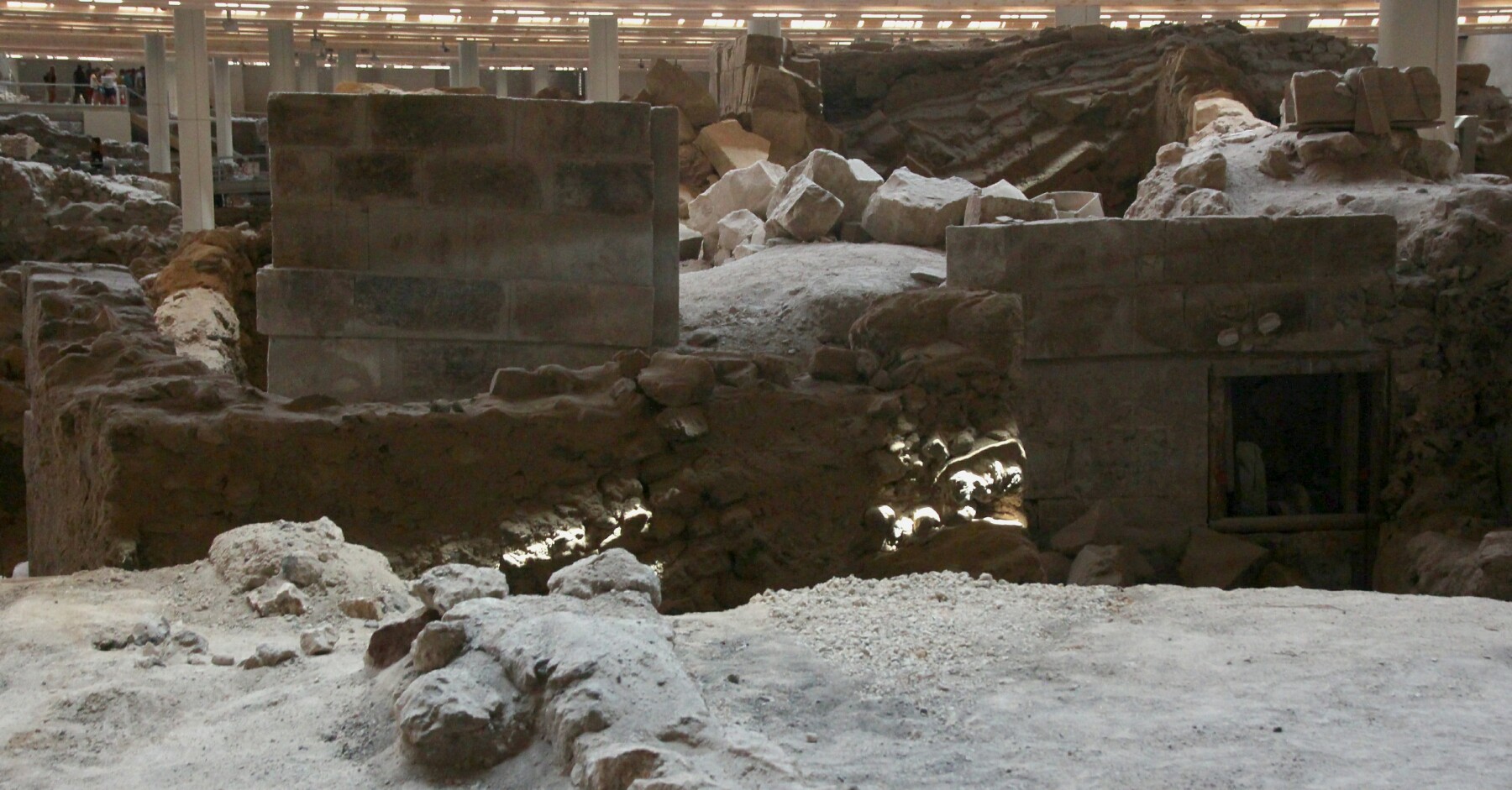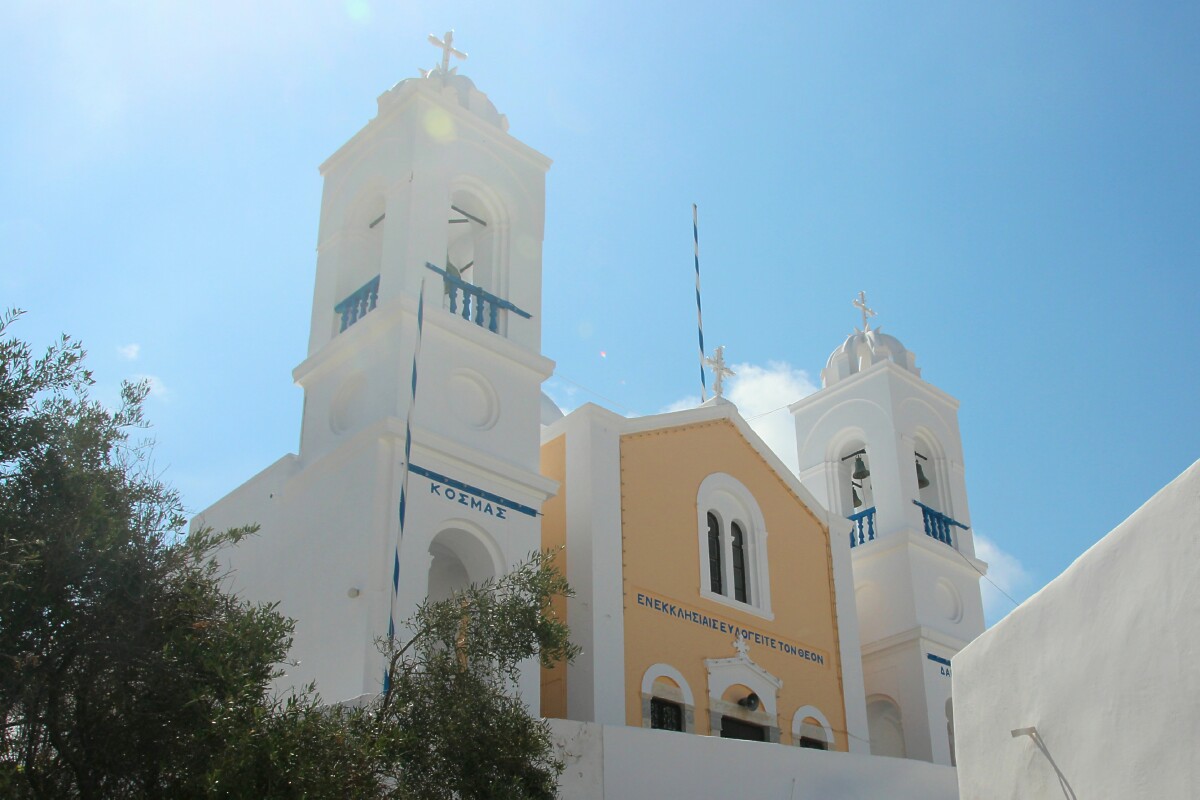Santorini (Thira)
July 17, 2017
|

Above: The ruins of the ancient town of Akrotiri, buried under volcanic ash in 1627 B.C. This building a public/government building of some type,three stories plus a roof,
and it was totally buried. Interestingly, no remains of people have been found on site.
Did they leave right after the earthquakes that occurred a few weeks before the volcanic eruption?
Are they all huddled
together somewhere buried in ash, as happened in Herculaneum in Italy (near Pompeii)?
Are they buried somewhere in another part of town (about 3% of the town has been excavated so far)?
|
|
1 to 5 are sights in Megalochori, including a building in #2 not painted white like most of the others, in the manner prior to the Ottoman occupation. Greeks were forbidden to fly their (blue and white) flag,
so as an act of defiance they painted their houses blue and white. Previously, houses were not painted at all. They were built of vernacular stone and due to pirate raids in the Aegean, they were
not decorated
so that they blended with the landscape and were harder to see.
6, 7, 8 and 11 show a model of the archeological site at the Ancient City of Akrotiri, and the top (3rd) floor of a public building.
9 and 10 show archeologists working on some of the many pots, furniture and other objects at the site, well preserved because they were buried in ash.
|

|
|